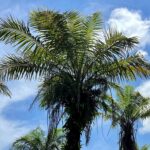Young cassava leaves are a regularly eaten side dish for Mentawai people. Cassava (Manihot esculenta, Crantz) is endemic to the southern rim of Amazonia in South America. There, it was domesticated around 5000 BC. In the 16th century AC, Spanish and Portuguese explorers brought them to Africa. Only in the 1960s was cassava introduced to Asia. So, it is not a traditional food addition to Mentawais but only a recently adopted one.
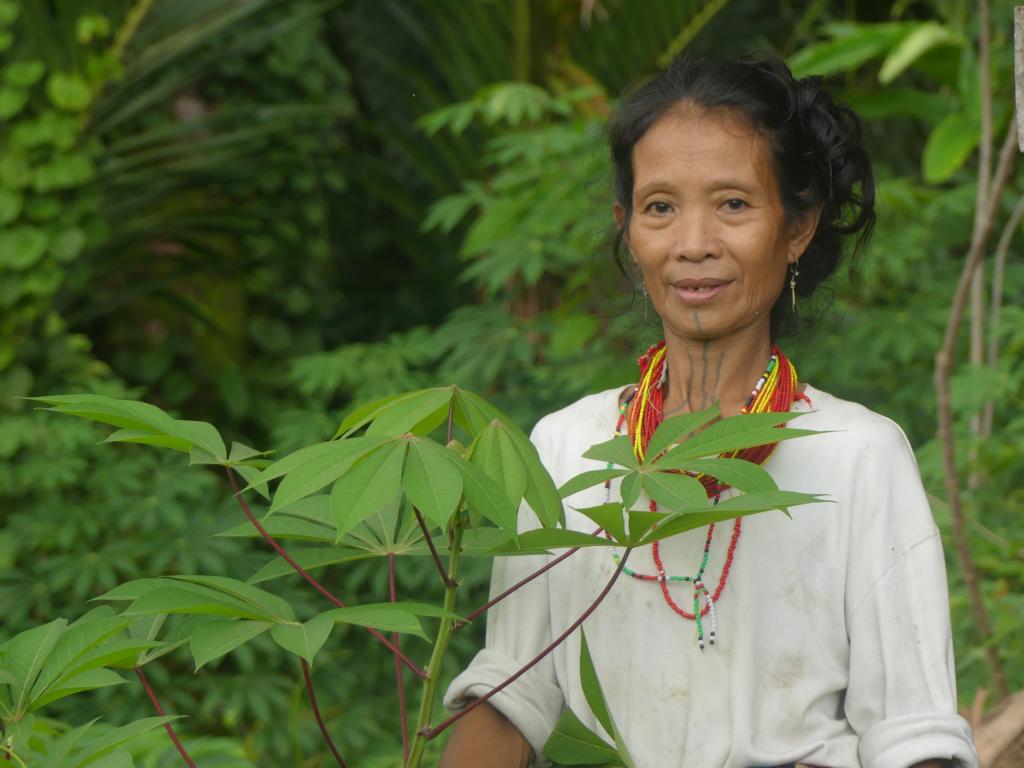
Mentawai eating habits
As mentioned in previous articles, Mentawais’ staple foods are Sago, Taro, and Bananas. These are foods rich in carbohydrates. Protein comes from the field, stream, or forest, and minerals and micronutrients come from fruits and vegetables. During Durian season, forest-dwelling Mentawais will nearly exclusively live from these fruits.
Description of cassava plants
Among all the green plants around forest dwellings, cassava can be easily recognized by three characteristics.
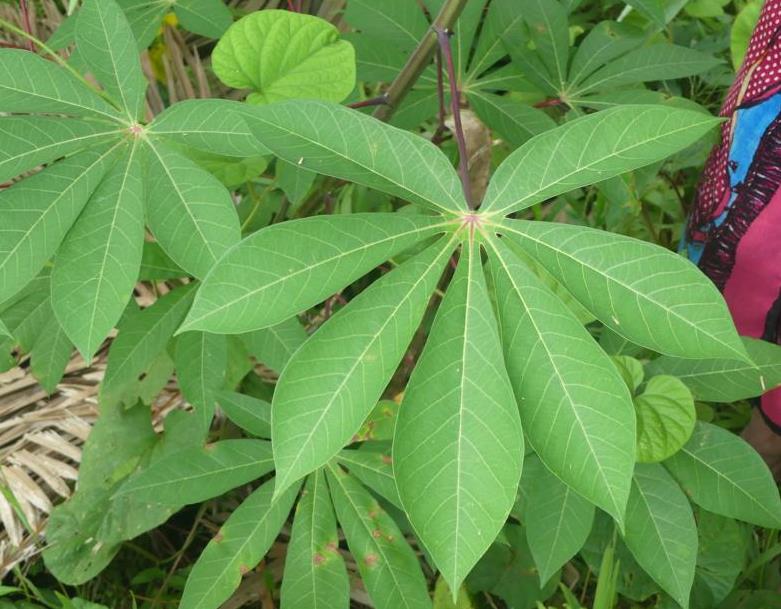
One – Leaves are palmate with either one, three, five, or seven lobes. And the petioles around the Uma of Aman Aru were always red.
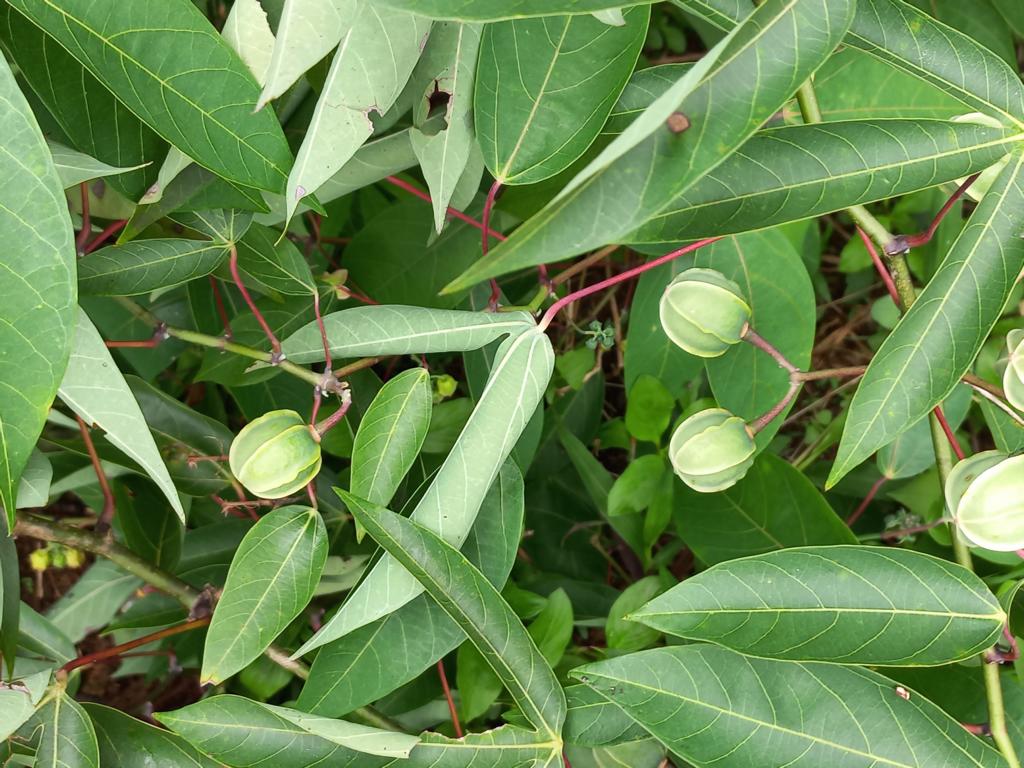
Two – The seed pods show characteristic protruding ridgelines on their surface…

Three – …and the stems have a typical knobby appearance of alternating nodes and internodes.
With these three characteristics of leaves, seed pods, and stems, an identification of cassava plants will be easily possible. But – there are different growth types for the same plants. One cultivated type is primarily used for its leaves as a vegetable, and another is for harvesting the roots.
Cultivated, spread growth type

During the first six months of growth, the plant’s energy is mainly used to form leaves and stems. Young leaves are harvested regularly when reaching a low shrub height. This way, the best cassava leaf quality for human consumption will be assured. The roots, however, will not be able to store enough starch in their cells, remain small, and taste slightly bitter. Due to the missing starch cells, they also have a chewy texture when eating.
Cultivated, erect growth type
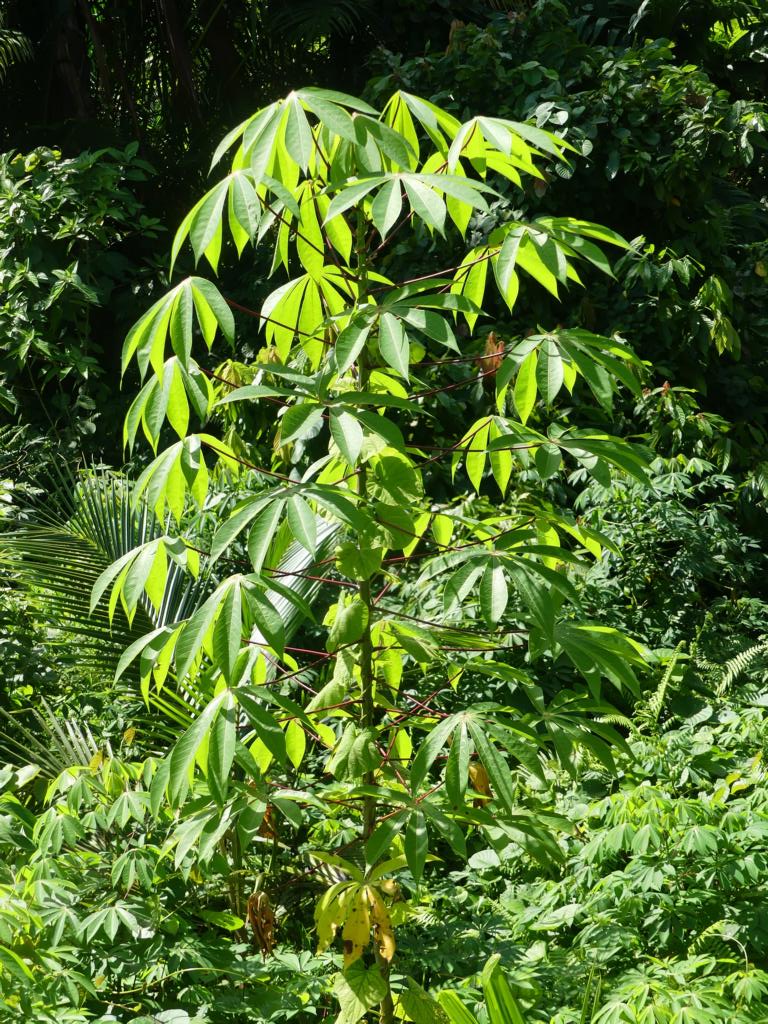
For the first six months of growing, none or only very few leaves will be harvested. When branching occurs after about six months, side branches will be trimmed so that only a limited leave cover will remain. At maturity, leaf production will slow down, and a maximum amount of starch will be stored in the storage roots. This way, cassava roots will be produced with the best quality.
Uncultivated type
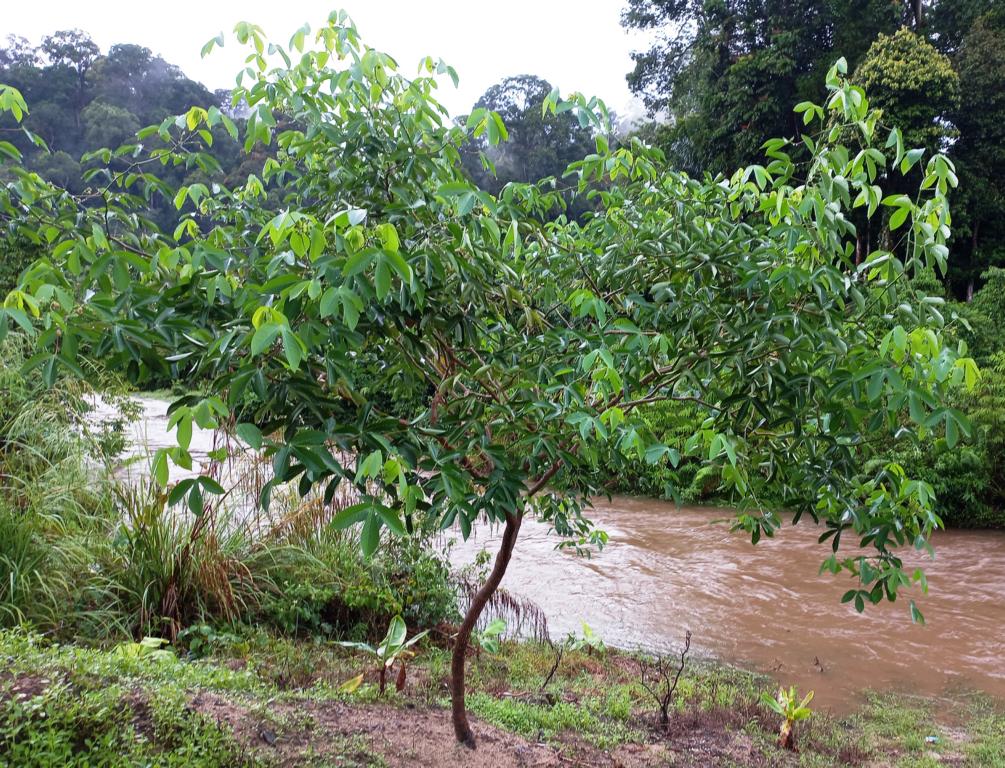
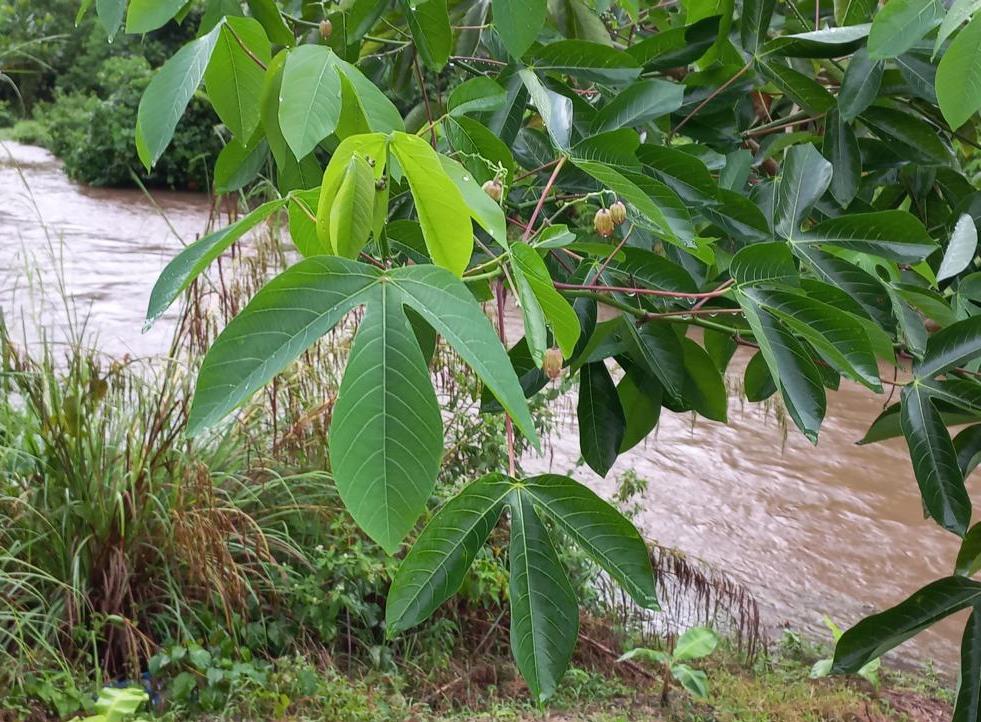
When visiting an Orang Rimba clan in Jambi province, Sumatra, we found a mature and uncultivated cassava tree before a hut. Young leaves were sparingly used for eating; his only function was providing shade for kids playing on sunny days.
How to prepare young cassava leaves
After harvesting the leaves from cassava plants, the leafy lobes will be plucked from the stems and petioles. The leaves contain hydrocyanic acid and, therefore, have to be boiled, and the water be discarded. Boiling the young leaves with salt will keep their green color; without salt, they will turn brownish. After about 10 minutes of boiling, they are soft, non-toxic, and ready to eat. Mentawais will eat them as a side dish in this simple way. In contrast, others will improve their taste by stewing or currying them further.

Nutritional value of cassava leaves
The Central Research Institute for Food Crops in Bogor, Indonesia, published the nutritional content of cassava leaves, which is as follows:

As can be seen from this table, cassava leaves are high in protein, iron, and vitamins A and C. These nutritional values are uncontested by various authors. However, the contents of Ca, Zn, and others are hotly contested by differing study results.
In summary, cassava leaves are rich in protein, minerals (especially iron), and vitamins. If properly detoxified, they are an important supplement to starchy diets.
Lessons learned from Cassava leaves vegetable:
- Young cassava leaves are rich in protein, iron, other minerals, and vitamins.
- The leaves must be boiled, and the boiling water must be discarded.
- If the boiling water contains either salt or baking soda, the green color of the leaves will remain.
- Mentawai people eat these boiled leaves as a side dish to starchy food.
- Many other cultures cook the detoxified leaves further in stews and curries.
.



